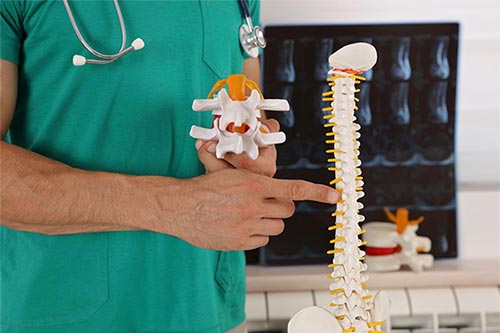
Educating oneself about spine surgery is a crucial step in the patient's journey. Spine surgery is a complex and delicate procedure that aims to correct spinal disorders, such as herniated discs, spinal stenosis, scoliosis, and many other conditions. If you or a loved one are considering spine surgery, learn about different surgical options to help set expectations and make an informed choice.
Traditionally, spine surgery is performed using an open or minimally invasive approach, where the surgeon makes an incision and uses specialized instruments to access and operate on the spine. However, in recent years, a new technology has emerged that offers a more precise and less invasive alternative: robotic-assisted spine surgery.
What is Robotic-Assisted Spine Surgery?
Robotic-assisted spine surgery is a type of minimally invasive surgery that uses a robotic arm and a computerized navigation system to assist the surgeon in performing the operation. The robotic arm holds a surgical tool that can move in multiple directions and angles, while the navigation system provides real-time 3D images of the spine and the surgical site. The surgeon controls the robotic arm and the tool through a console while viewing the images on a monitor.
Learn about the key differences between robotic-assisted and traditional spine surgery to make an informed choice about your treatment options.
| Key Metric | Robotic-Assisted Spine Surgery | Traditional Spine Surgery |
| Precision and Accuracy | Using advanced imaging and computer-assisted navigation, surgeons can create a detailed 3D map of the patient's spine, allowing for highly accurate planning and execution. This precision is particularly beneficial for complex procedures, such as spinal fusion or disc replacement. | The precision achieved in traditional methods can vary depending on the surgeon's proficiency and the complexity of the case. |
| Surgical Technique | Many robotic-assisted spine surgeries involve minimally invasive techniques. This means smaller incisions, reduced trauma to surrounding tissues, and quicker recovery times. | The size of the incision is typically larger. This can result in more postoperative discomfort, longer hospital stays, and a potentially slower recovery. |
| Personalized Treatment Planning | The ability to create a personalized, patient-specific treatment plan is a hallmark of robotic-assisted spine surgery. Surgeons can tailor the procedure to the unique anatomy of each patient, optimizing the implant placement and overall surgical approach. | While traditional surgery is effective, it may follow a more standardized approach, with less customization based on individual patient anatomy. |
| Postoperative Recovery | Smaller incisions, reduced tissue damage, and precise surgical techniques often contribute to a faster recovery. Patients may experience less pain and require shorter hospital stays. | Recovery from traditional spine surgery may involve a longer hospital stay and a potentially more extended rehabilitation process. |
Robotic-assisted spine surgery is a promising technology that offers a more precise and less invasive option for spine surgery. However, it is not a one-size-fits-all solution, and the choice between robotic-assisted and traditional spine surgery depends on various factors. Therefore, it is important to consult a qualified and experienced spine surgeon who can evaluate your condition and recommend the best option for you.
AUTHOR: Dr. Payam Moazzaz is a board-certified orthopedic spine surgeon in California specializing in robotic-assisted minimally invasive spine surgery.

